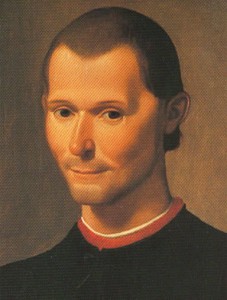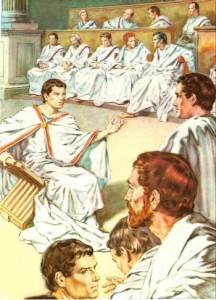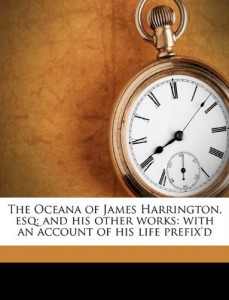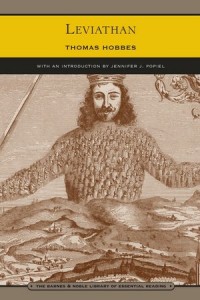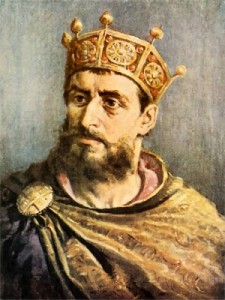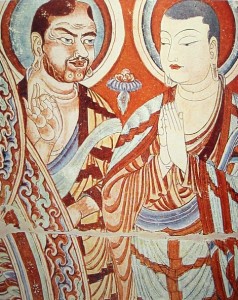Den islandske sangerinde Björk har med sit nye album Biophilia skabt et univers, der iscenesætter videnskaben som en fortælling, vi alle er en del af.
Blandt musikinteresserede er det almen viden, at den islandske popdronning Björk ikke er bleg for at give den hele armen, når musikken skal præsenteres for offentligheden. Det gælder både musikkens fysiske emballage, der år for år er blevet mere og mere ekstravagant, såvel som det gælder de kunstneriske og idémæssige universer, der konceptuelt ligger til grund for musikken.
 Intet kunne dog have forberedt offentligheden på omfanget af Björks ottende album, Biophilia: Ingeniører, opfindere, programmører, akademikere og instrumentbyggere har alle været i arbejdstøjet for at hjælpe det overdådige konceptalbum til verden – et album, hvis tema er, at vi alle er børn af moder natur, og at alle naturens skabninger hører sammen, og er forbundne via usynlige bånd.
Intet kunne dog have forberedt offentligheden på omfanget af Björks ottende album, Biophilia: Ingeniører, opfindere, programmører, akademikere og instrumentbyggere har alle været i arbejdstøjet for at hjælpe det overdådige konceptalbum til verden – et album, hvis tema er, at vi alle er børn af moder natur, og at alle naturens skabninger hører sammen, og er forbundne via usynlige bånd.
Biofilia-tesen stammer egentlig fra den tysk-amerikanske socialpsykolog Erich Fromm, der trak på det nittende århundredes romantiske og vitalistiske strømninger og foreslog, at et tilstrækkeligt åbent menneske ville være i stand til at opleve et psykologisk stadie, ikke ulig forelskelse, hvor psyken blev tiltrukket af alt, hvad der var levende. Mere naturvidenskabeligt, så fremsatte den kontroversielle biolog E.O. Wilson i sit 1984-værk, Biophilia, den tese, at der eksisterer en affinitet mellem alle levende organismer, hvilket eksempelvis er grunden til, at kattekillinger og hundehvalpe kan aktivere følelser af yngelpleje i os mennesker.
Siden har feltet trukket i to retninger: Der er dem, der mener, at det biofile bånd kun gælder mellem pattedyr (da det alt andet lige er svært at forestille sig en følelsesmæssigt velvilje over for kryb og parasitter). Omvendt er der også dem, der mener, at sondringen mellem levende og ikke-levende er et kunstigt skel, og at biofili derfor bør strække sig ud til alt i universet. Den vietnamesisk-amerikanske astrofysiker Trinh Xuan Thuan gjorde sig f.eks. til talsmand for denne position, da han i 2008s bestsellerbog The Quantum and the Lotus skrev: “Vi er alle skabt af stjernestøv. Vi er de vilde dyrs brødre og fætre til blomsterne på marken. Vi er alle bærere af universets historie. Blot ved at trække vejret indgår vi i et forhold med alle andre væsener, der lever og har levet på denne planet. Med en enkelt vejrtrækning indånder vi adskillige partikler fra det bål, der brændte Jeanne d’Arc. På den måde er vi alle forbundne.”
Og det er i sidstnævnte retning – at biofili omfatter alt i naturen – at Björk selv bevæger sig med sit nye album: Ikke blot insekter og bakterier skal inkluderes blandt det biofile bånd, men også uorganiske størrelser som krystaller, vulkanudbrud, lynnedslag og månens cyklus – alle skal de regnes som en del af det bånd, vi alle deler.
Gør videnskaben sin egen
En mindre erfaren kunstner havde nok knækket nakken på så stort et projekt, men det lykkes faktisk for Björk, der er vant til at arbejde med utraditionelle inspirationskilder, og endda har udtalt, at hun kan opleve de uvante ledemotiver kan være en udfordring for hendes kreativitet. Når projektet fungerer, er det, fordi Björk formår at løfte det naturvidenskabelige tema uden at forfalde til kedsomhed eller forudsigelighed. Og så forstår Björk intuitivt, at udvælge let genkendelige temaer, der er nemme at identificere for lytteren. Torden, vulkanudbrud, en virus der profilerer, optræder alle som stilfigurer i Biophilias univers, og Björk formår samtidig at imødegå den kunstneriske udfordring, der ligger i ikke blot at oversætte dem til musik, men at gøre begreberne til sine egne: DNA-helix’et er en ”evig halskæde”, og en virus, der spreder sig, ”bliver forelsket” i de celler, den vil spise.
Den islandske sangerinde har før flirtet med videnskaben, men med Biophilia er Björk blevet voksen: Hvor det tidligere studiealbum, Volta, gjorde brug af touchscreens og en bred vifte af elektronisk udstyr, der skulle bruges til at drukne hendes publikum i atonale lyde og epileptiske lysglimt, så vender Biophilia i stedet blikket indad og spørger sig selv, hvordan videnskaben kan gøres til kunst. Hvor Volta ifølge kritikerne var teknologi for teknologiens skyld, så er Biophilia videnskab på musikkens præmisser. Foucault-penduler, der slår strenge an, så jordens rotation ”spiller” på harpe, Tesla coils, der summer med på melodien om et tordenvejr, og et væld af nyopfundne digitale og analoge instrumenter står alle klar til at bidrage til at løfte Biophilia ud af det traditionelle musikunivers og over i Björks hybridlandskab, der er at finde midt mellem videnskab og kunst.
For så vidt er Björk ikke den første, der har forsøgt en sådan fusion af kunst og natur. Inden for den klassiske musik kender man til programmusikken; en genre der forsøger at kommunikere ikke-musikalske temaer gennem musikken. Beethovens Måneskinssonate fremmaner f.eks. fornemmelsen af månen, der valser på overfladen af Luzern-søen i Schweiz, ligesom de russiske romantikere Tchaikovsky, Rachmaninov og Rimsky-Korsakov alle forsøgte at hidkalde sig de vidtstrakte russiske steppelandskaber i deres musik, og den altomsluttende isvinter, der prægede dem.
I en større kulturel kontekst er det denne arv, som Björk bygger videre på med Biophilia. Men hvor den klassiske musiks virkemidler er satte, gør Björk præcis hvad der passer hende, og som så ofte før i sin karriere, så ser Björk stort på musikkens traditionelle former. Alligevel kan Björk dog ikke sige sig fri for arven fra den klassiske musiks frembringelser, idet et nummer som Crystalline gør beregnende brug af gentagelser for at visualisere den systematiske struktur, der findes i krystalformationer, mens nummeret Cosmogony gør brug af tonal ligevægt for at symbolisere, hvordan solsystemets planeter holdes på plads af modsatrettede trækkræfter. Endelig kan nævnes nummeret Dark Matter, der bevæger sig op og ned af toneskalaerne for at vise, at mørkt stof (ifølge visse fortolkninger af fænomenet) er partikler fra andre universer.
Det siger sig selv, at hybridproduktioner som disse kræver en del artistic license fra kunstnerens side, og Björk holder sig da heller ikke altid inden for rammerne af videnskaben. Der er tale om en krævende balancegang, der konstant er i fare for at plumpe i som enten for videnskabelig, og for fattig i forhold til kunsten, eller for prætentiøs, og for ligegyldig i forhold til videnskaben. Björk har dog gjort sit hjemmearbejde, og det univers, der ligger til grund for Biophilia er både gennemført og spændende at gå på opdagelse i.
